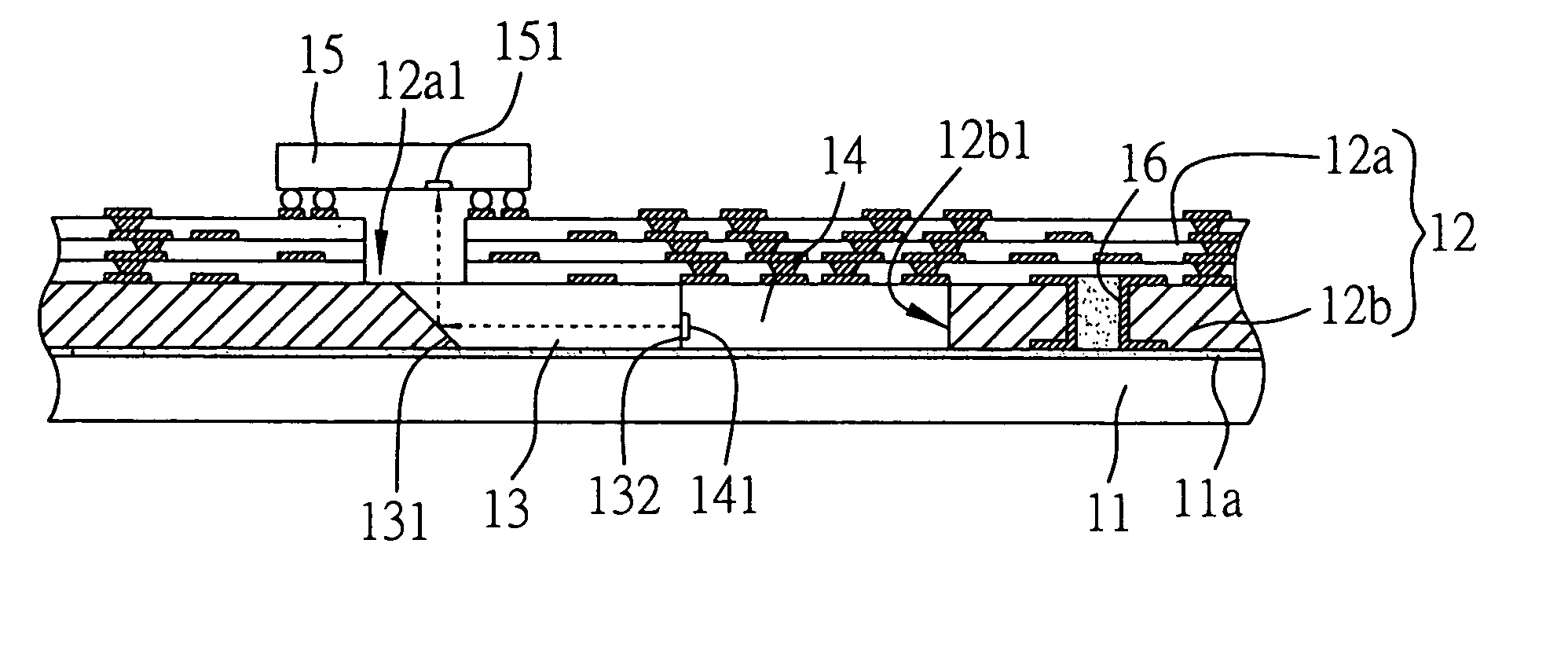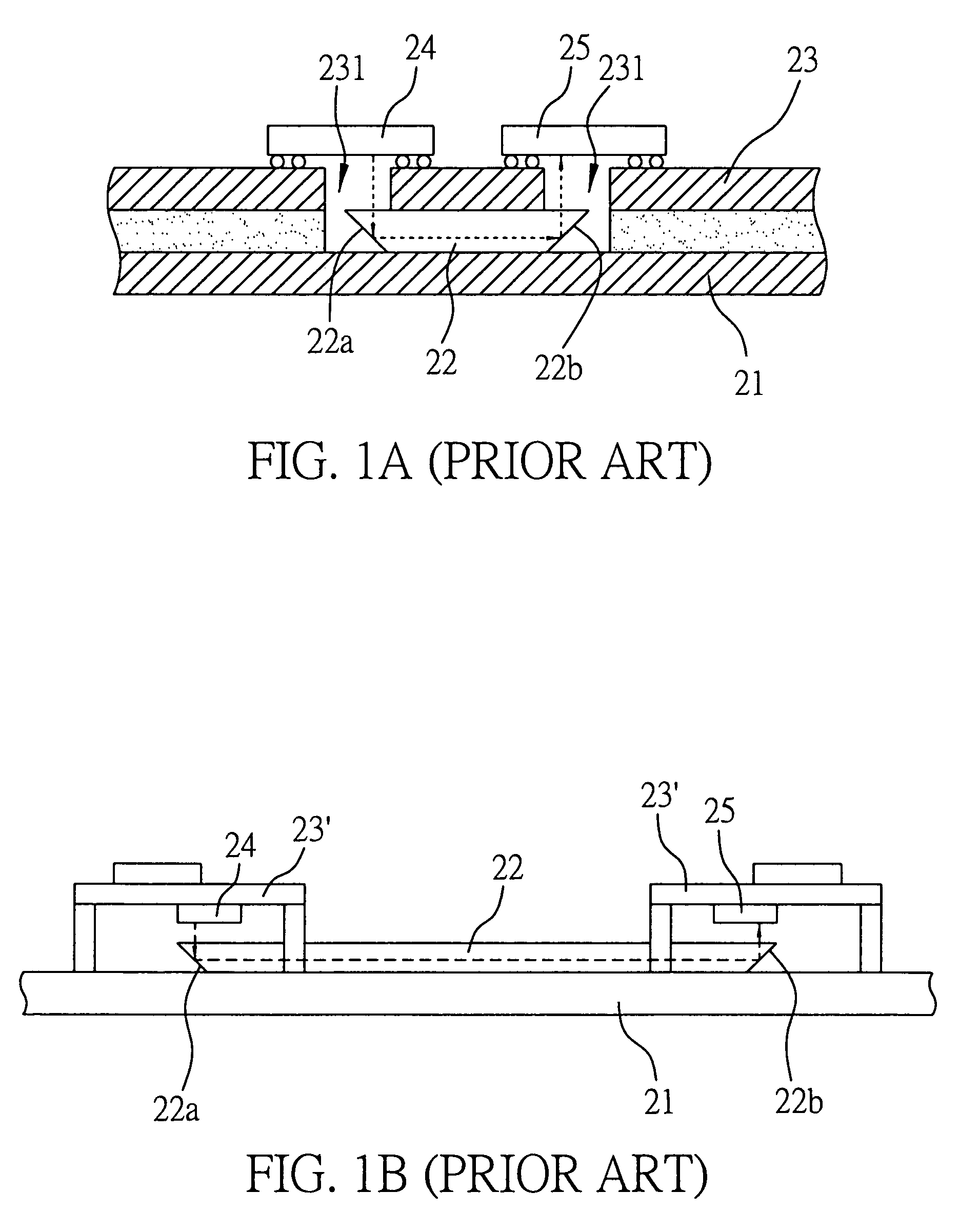Structure with embedded opto-electric components
a technology of opto-electric components and structures, applied in the direction of optical elements, circuit optical details, instruments, etc., can solve the problems of difficult fabrication of semiconductors with higher performance, delay in signal time, and difficulty in efficiently dispersing heat, so as to reduce photo beam loss, improve transmission quality, and compact size
- Summary
- Abstract
- Description
- Claims
- Application Information
AI Technical Summary
Benefits of technology
Problems solved by technology
Method used
Image
Examples
Embodiment Construction
[0039]Preferred embodiments of a structure with embedded opto-electric components proposed in the present invention are described as follows with reference to FIGS. 3A-3C, 4 and 5.
[0040]FIGS. 3A to 3C are cross-sectional schematic diagrams of the structure with embedded opto-electric components according to the present invention. As shown in FIGS. 3A to 3C, the structure with embedded opto-electric components comprises: a carrier 11, which may be a metallic plate, a ceramic plate, or an organic substrate such as a printed circuit board or an IC (integrated circuit) package substrate; at least one circuit board 12 mounted on the carrier 11, and comprising an upper board 12a (e.g. a printed circuit board or an IC package substrate) and a lower board 12b (e.g. an insulating board), wherein the upper board 12a has a cavity 12a1, and the lower board 12b has a receiving space 12b1 communicating with the cavity 12a1 of the upper board 12a; at least one waveguide 13 mounted on the carrier 1...
PUM
 Login to View More
Login to View More Abstract
Description
Claims
Application Information
 Login to View More
Login to View More - R&D
- Intellectual Property
- Life Sciences
- Materials
- Tech Scout
- Unparalleled Data Quality
- Higher Quality Content
- 60% Fewer Hallucinations
Browse by: Latest US Patents, China's latest patents, Technical Efficacy Thesaurus, Application Domain, Technology Topic, Popular Technical Reports.
© 2025 PatSnap. All rights reserved.Legal|Privacy policy|Modern Slavery Act Transparency Statement|Sitemap|About US| Contact US: help@patsnap.com



